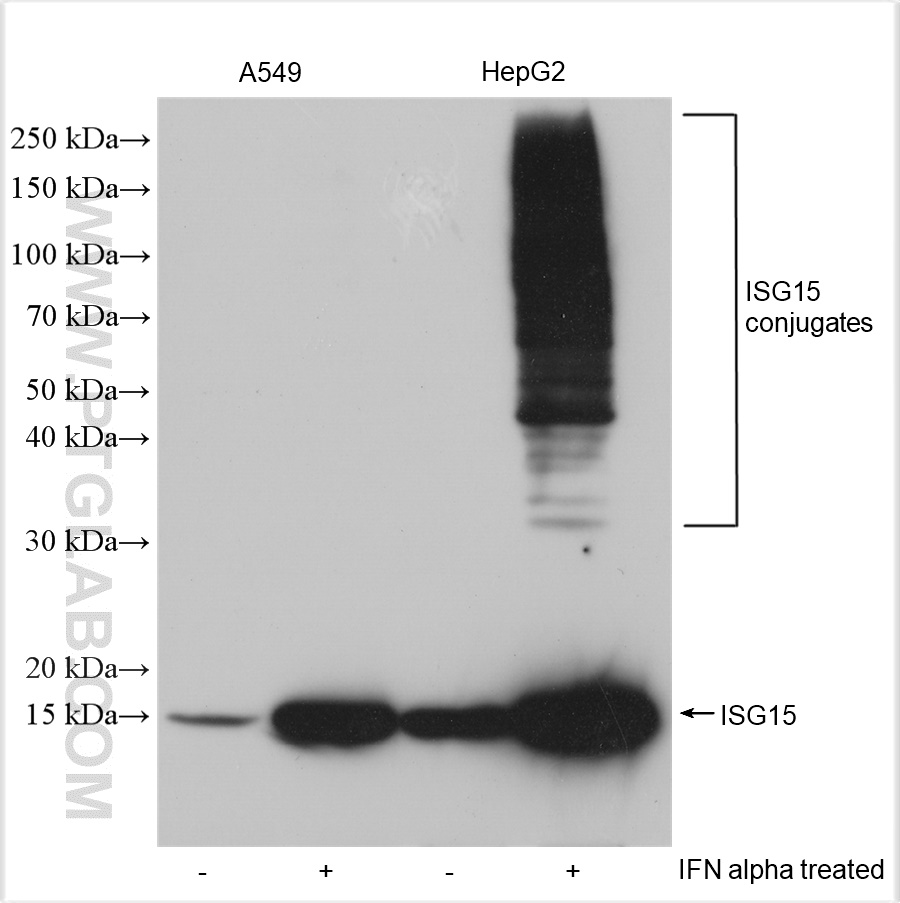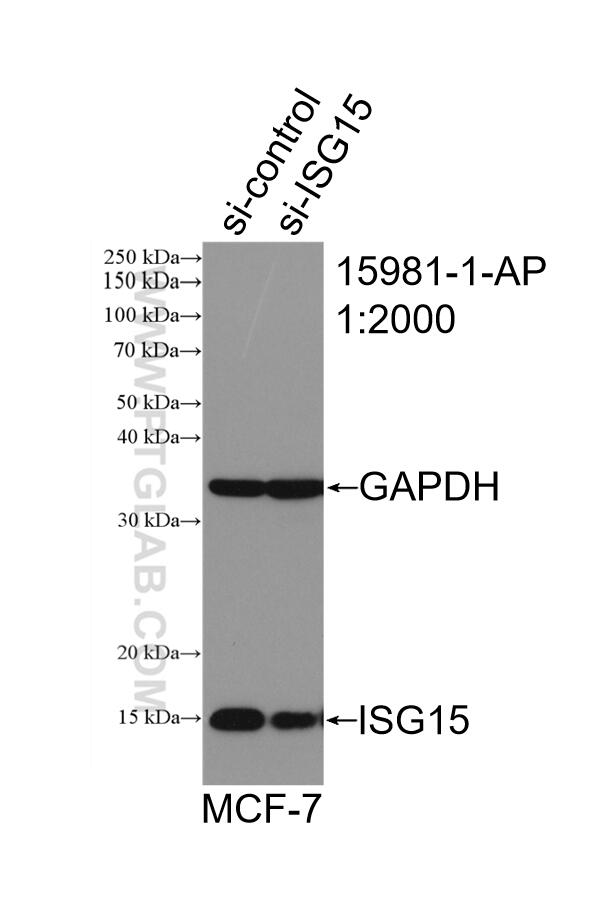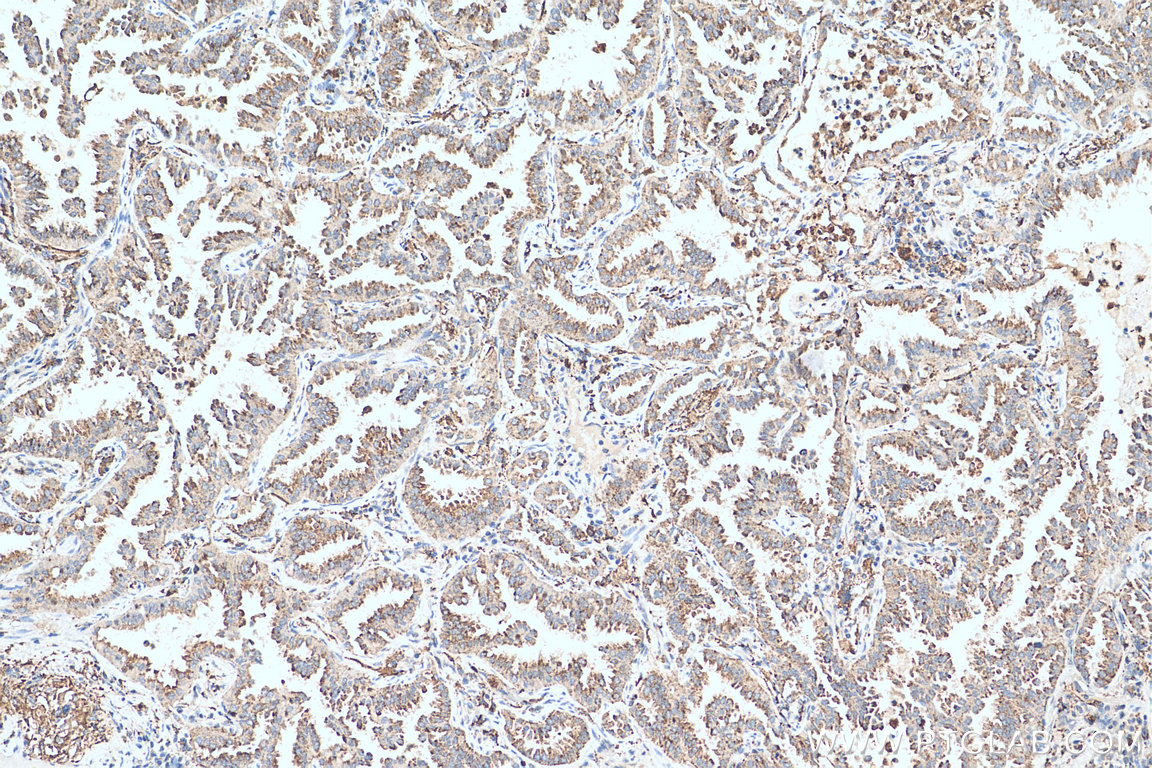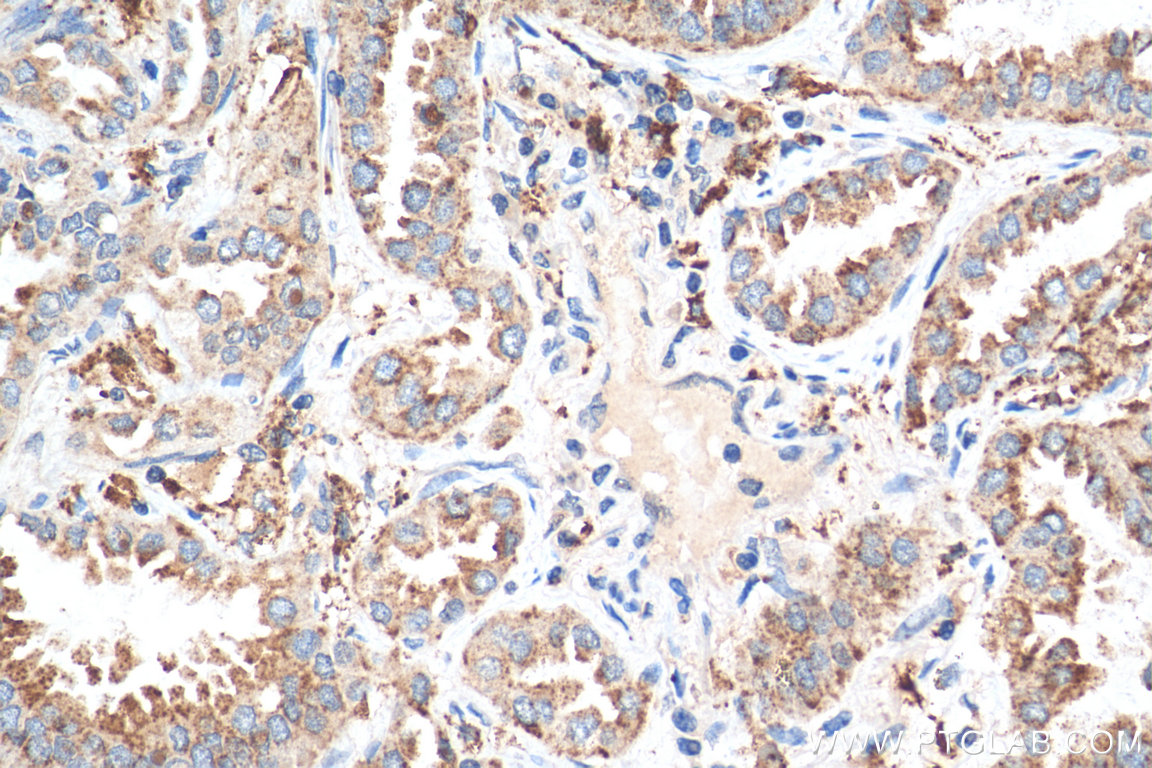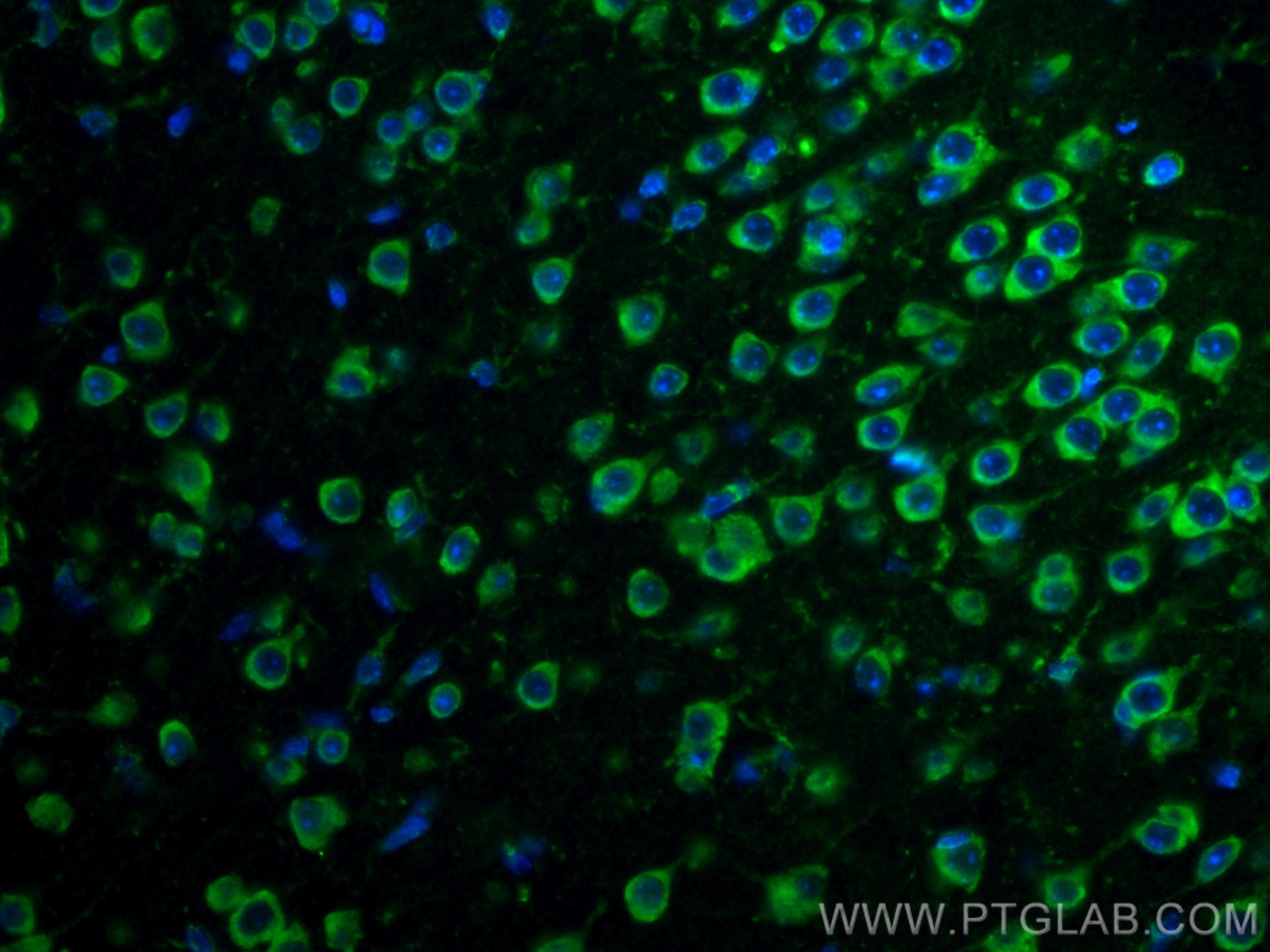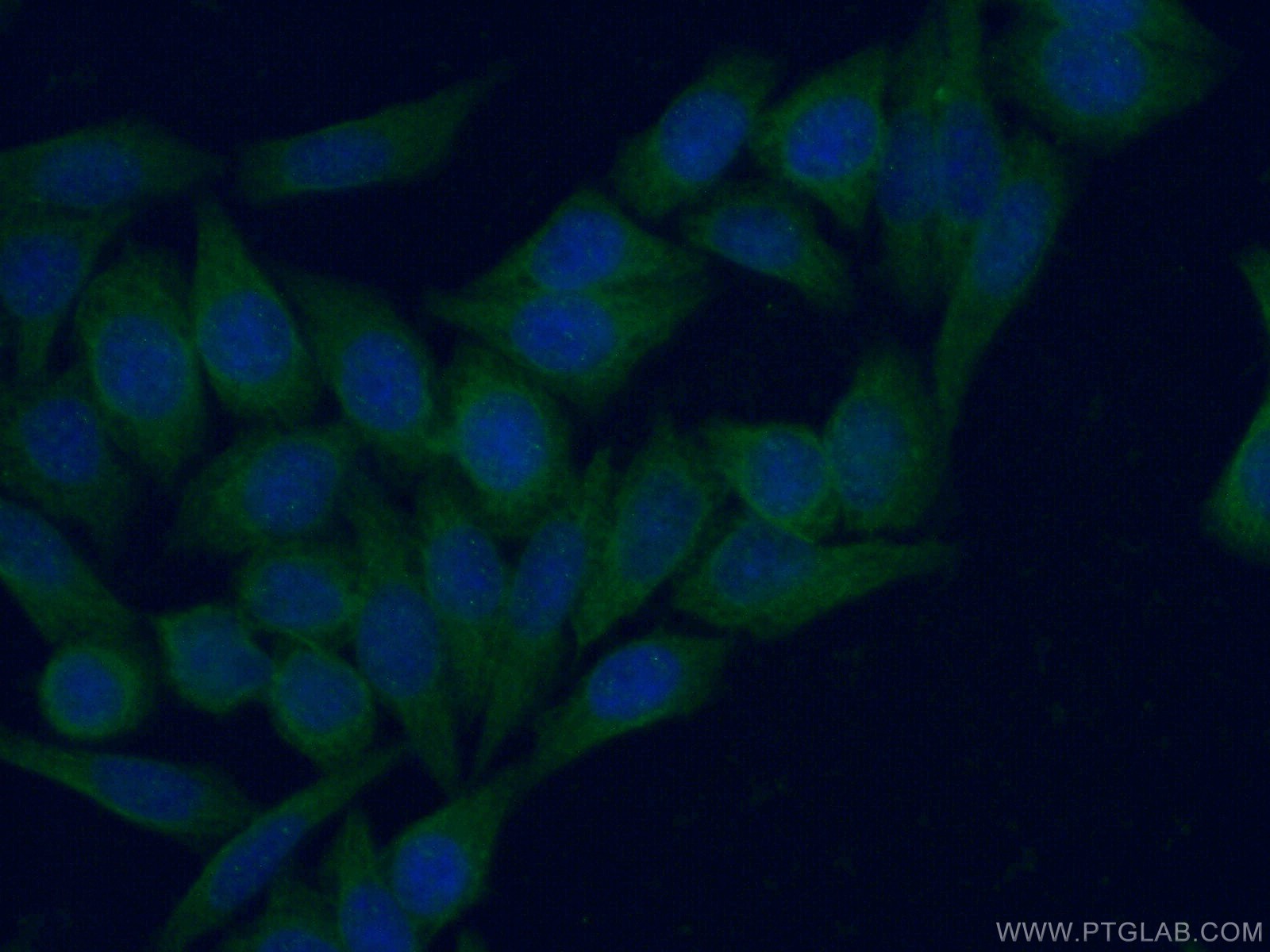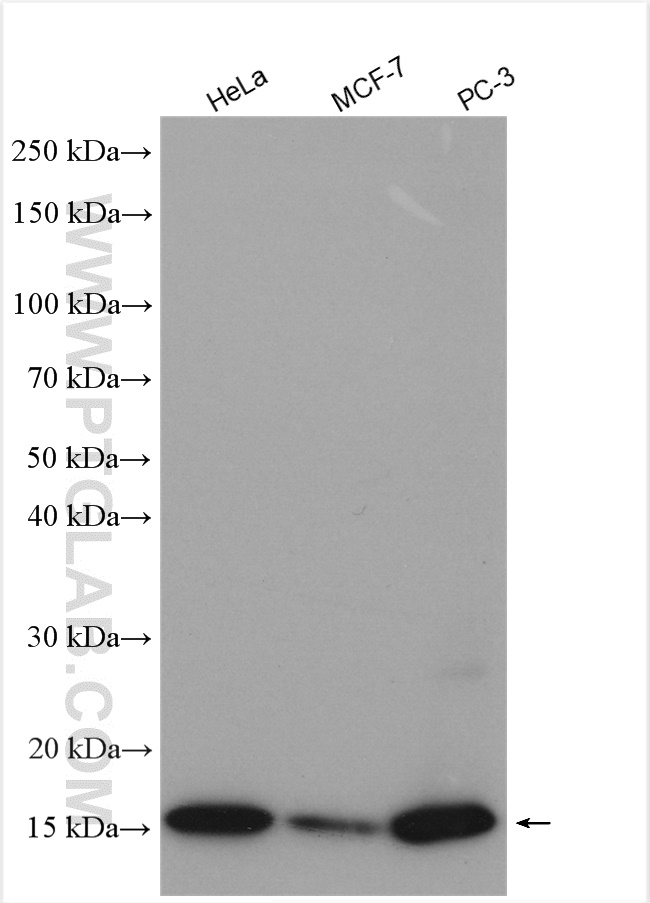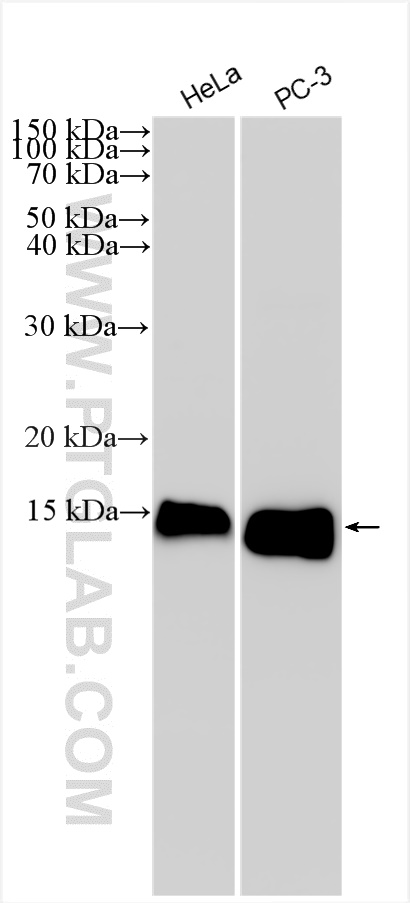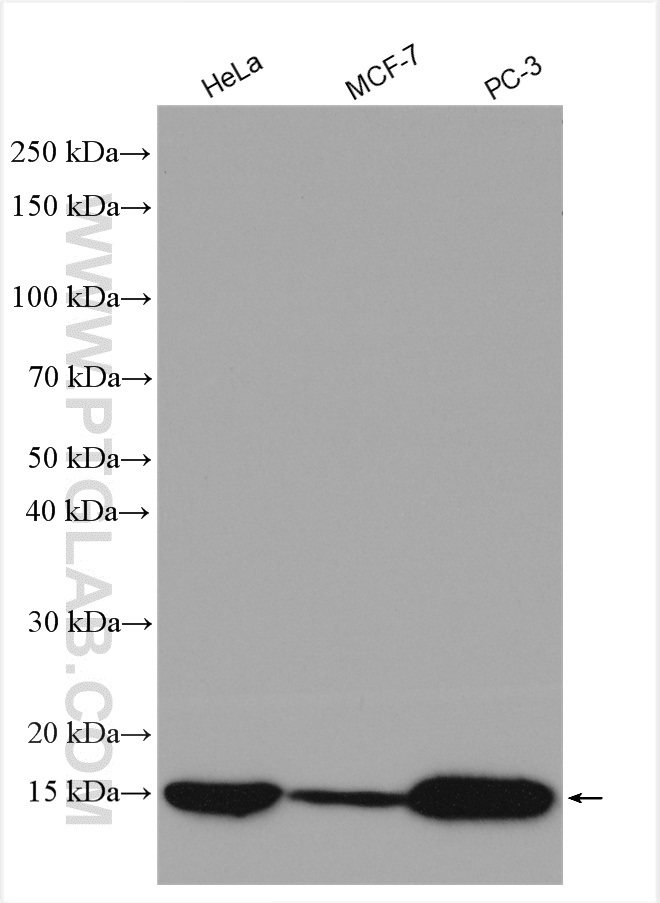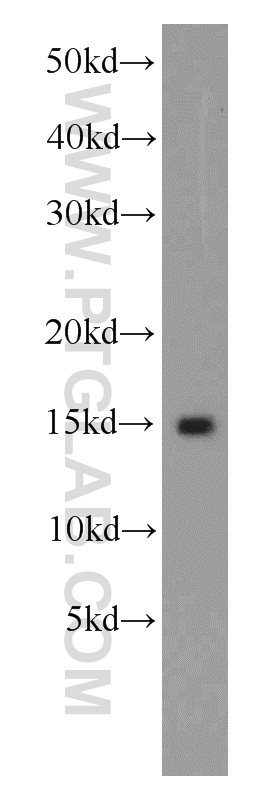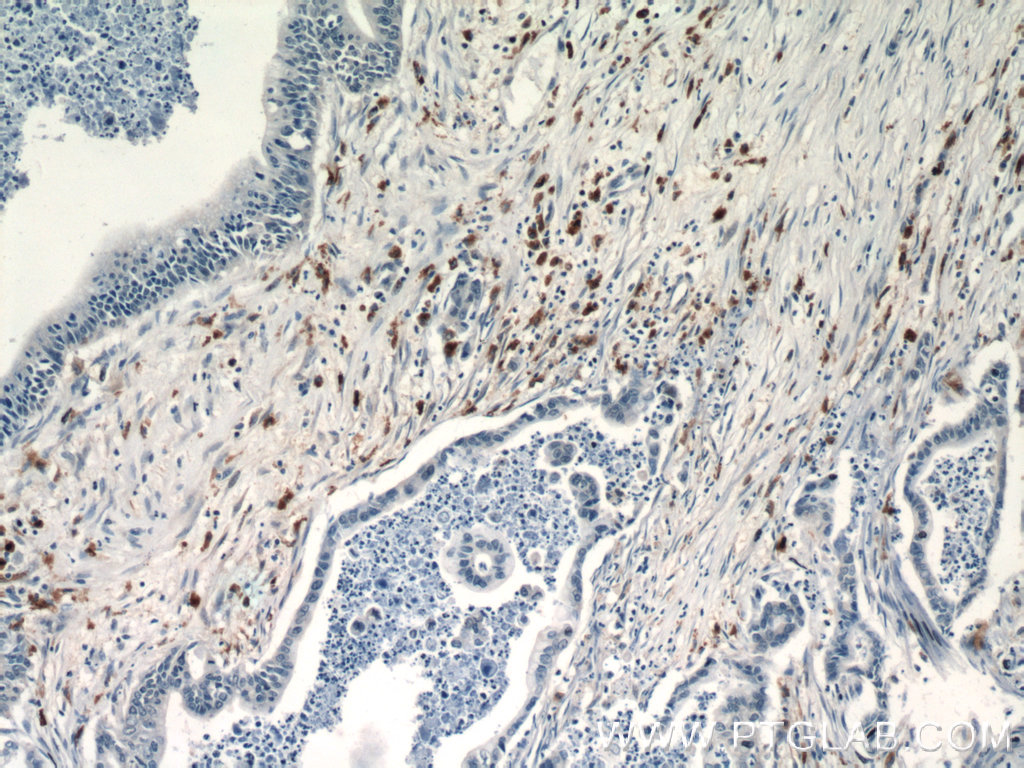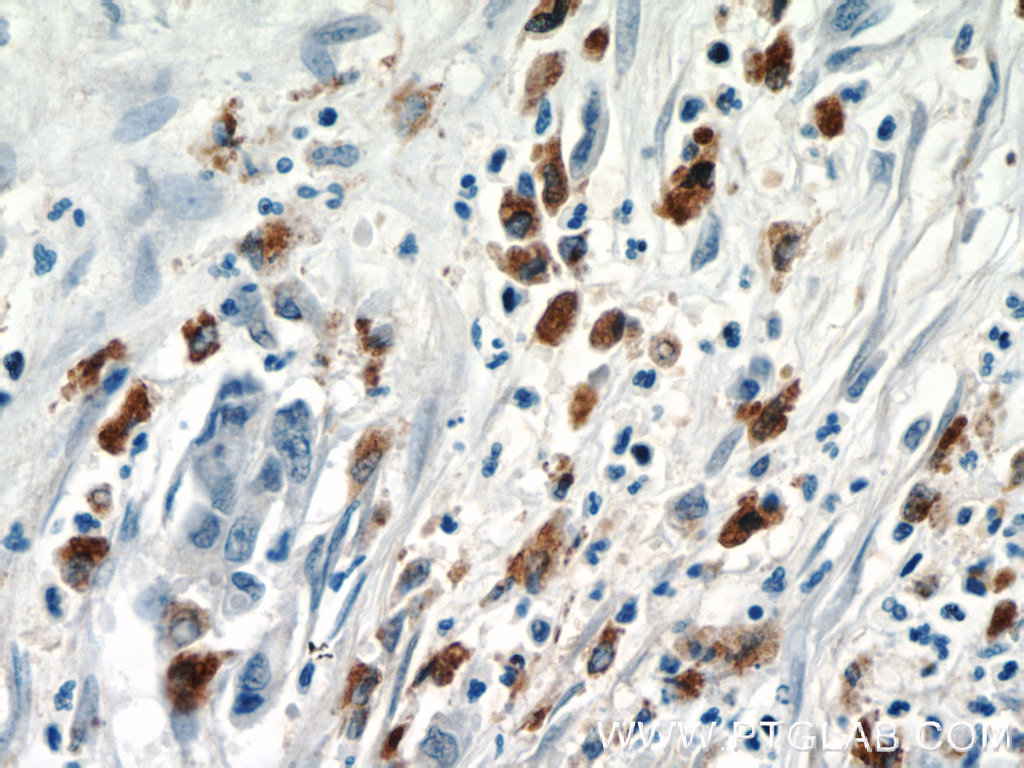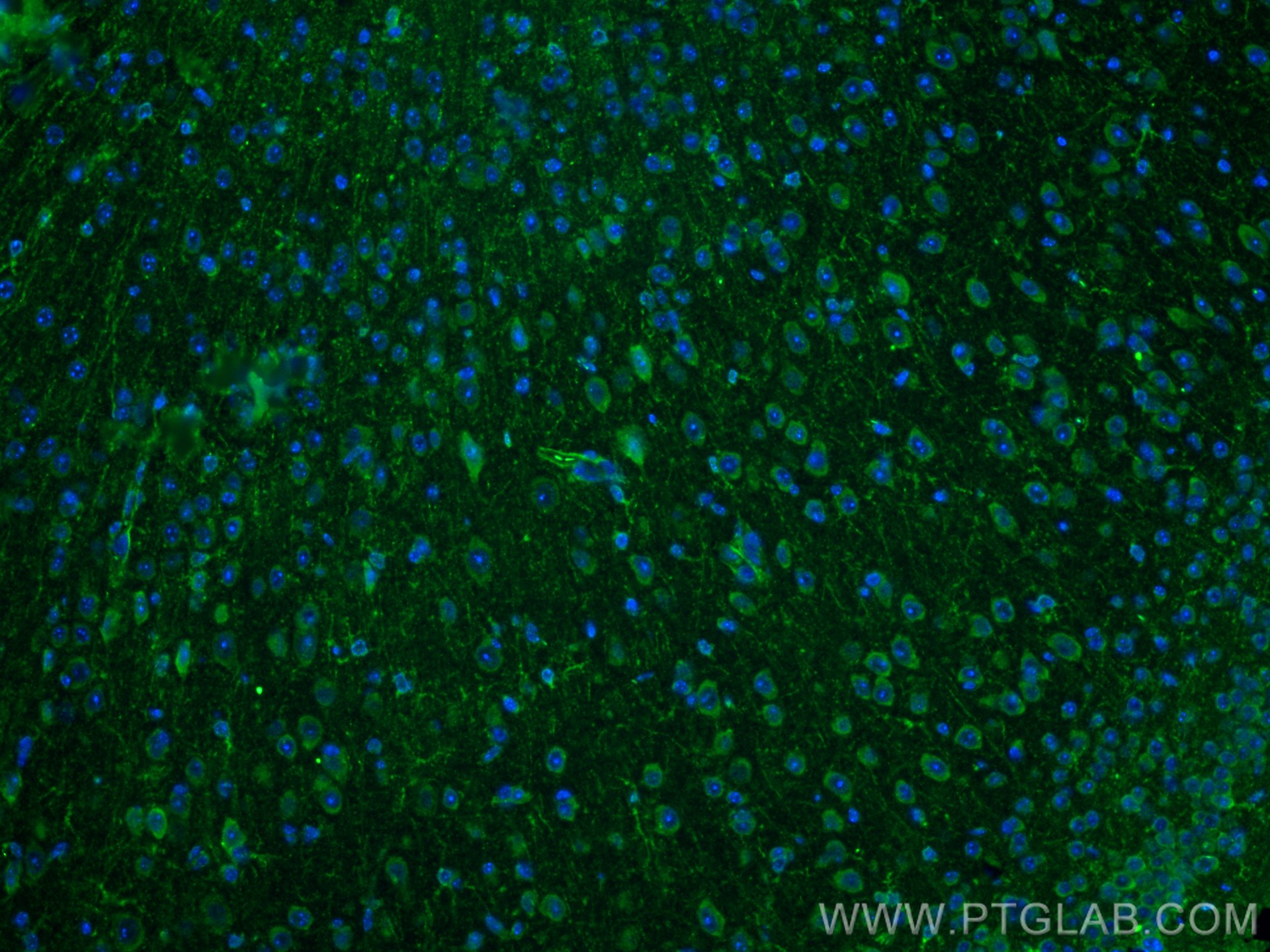验证数据展示
经过测试的应用
| Positive WB detected in | HeLa cells, human brain tissue, A549 cells, MCF-7 cells, PC-3 cells, IFN alpha treated A459 cells, HepG2 cells, IFN alpha treated HepG2 cells |
| Positive IHC detected in | human lung cancer tissue, human pancreas cancer tissue Note: suggested antigen retrieval with TE buffer pH 9.0; (*) Alternatively, antigen retrieval may be performed with citrate buffer pH 6.0 |
| Positive IF-P detected in | mouse brain tissue |
| Positive IF/ICC detected in | HeLa cells |
推荐稀释比
| 应用 | 推荐稀释比 |
|---|---|
| Western Blot (WB) | WB : 1:1000-1:4000 |
| Immunohistochemistry (IHC) | IHC : 1:50-1:500 |
| Immunofluorescence (IF)-P | IF-P : 1:50-1:500 |
| Immunofluorescence (IF)/ICC | IF/ICC : 1:50-1:500 |
| It is recommended that this reagent should be titrated in each testing system to obtain optimal results. | |
| Sample-dependent, Check data in validation data gallery. | |
产品信息
15981-1-AP targets ISG15 in WB, IHC, IF/ICC, IF-P, IP, CoIP, RIP, ELISA applications and shows reactivity with human, mouse samples.
| 经测试应用 | WB, IHC, IF/ICC, IF-P, ELISA Application Description |
| 文献引用应用 | WB, IHC, IF, IP, CoIP, RIP |
| 经测试反应性 | human, mouse |
| 文献引用反应性 | human, mouse, pig, monkey, goat |
| 免疫原 |
CatNo: Ag8782 Product name: Recombinant human ISG15 protein Source: e coli.-derived, PGEX-4T Tag: GST Domain: 1-165 aa of BC009507 Sequence: MGWDLTVKMLAGNEFQVSLSSSMSVSELKAQITQKIGVHAFQQRLAVHPSGVALQDRVPLASQGLGPGSTVLLVVDKCDEPLNILVRNNKGRSSTYEVRLTQTVAHLKQQVSGLEGVQDDLFWLTFEGKPLEDQLPLGEYGLKPLSTVFMNLRLRGGGTEPGGRS 种属同源性预测 |
| 宿主/亚型 | Rabbit / IgG |
| 抗体类别 | Polyclonal |
| 产品类型 | Antibody |
| 全称 | ISG15 ubiquitin-like modifier |
| 别名 | G1P2, hUCRP, IFI15, Interferon-induced 15 kDa protein, Interferon-induced 17 kDa protein |
| 计算分子量 | 165 aa, 18 kDa |
| 观测分子量 | 15-17 kDa |
| GenBank蛋白编号 | BC009507 |
| 基因名称 | ISG15 |
| Gene ID (NCBI) | 9636 |
| RRID | AB_2126302 |
| 偶联类型 | Unconjugated |
| 形式 | Liquid |
| 纯化方式 | Antigen affinity purification |
| UNIPROT ID | P05161 |
| 储存缓冲液 | PBS with 0.02% sodium azide and 50% glycerol, pH 7.3. |
| 储存条件 | Store at -20°C. Stable for one year after shipment. Aliquoting is unnecessary for -20oC storage. |
背景介绍
ISG15 is a ubiquitin-like protein that becomes conjugated to many cellular proteins upon activation by interferon-alpha (IFNA) and -beta (IFNB). ISG15 forms covalent conjugates with its target proteins in a process called ISGylation, which in mammals is known to play a role in antiviral immunity. ISG15 proteins possess two ubiquitin-like (UBL) domains and a highly conserved C-terminal LRGG sequence, the latter being known as the ubiquitin conjugation motif. Intracellular ISG15 are conjugated, via the LRGG motif, to target proteins through a process called ISGylation, which resembles largely ubiquitination, the process of formation of ubiquitin conjugates. Unconjugated extracellular ISG15, which are released from several types of human and murine cells, are known to possess cytokine-like activity.
实验方案
| Product Specific Protocols | |
|---|---|
| IF protocol for ISG15 antibody 15981-1-AP | Download protocol |
| IHC protocol for ISG15 antibody 15981-1-AP | Download protocol |
| WB protocol for ISG15 antibody 15981-1-AP | Download protocol |
| Standard Protocols | |
|---|---|
| Click here to view our Standard Protocols |
发表文章
| Species | Application | Title |
|---|---|---|
Signal Transduct Target Ther TRAF3 activates STING-mediated suppression of EV-A71 and target of viral evasion | ||
Exp Mol Med SIRT1 ISGylation accelerates tumor progression by unleashing SIRT1 from the inactive state to promote its deacetylase activity | ||
Nat Commun Single cell RNA sequencing of human microglia uncovers a subset associated with Alzheimer's disease. | ||
Nat Commun ISGylation controls exosome secretion by promoting lysosomal degradation of MVB proteins. | ||
J Exp Clin Cancer Res ISG15 and ISGylation modulates cancer stem cell-like characteristics in promoting tumor growth of anaplastic thyroid carcinoma
| ||
Cancer Lett Induction of IFIT1/IFIT3 and inhibition of Bcl-2 orchestrate the treatment of myeloma and leukemia via pyroptosis |

